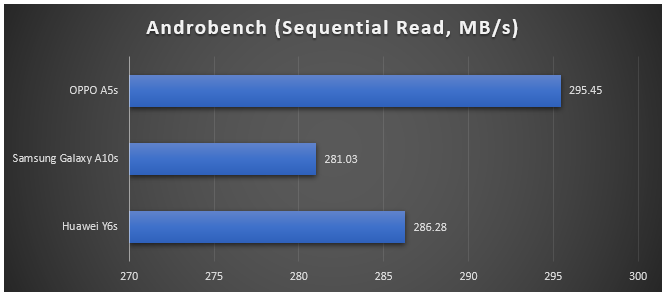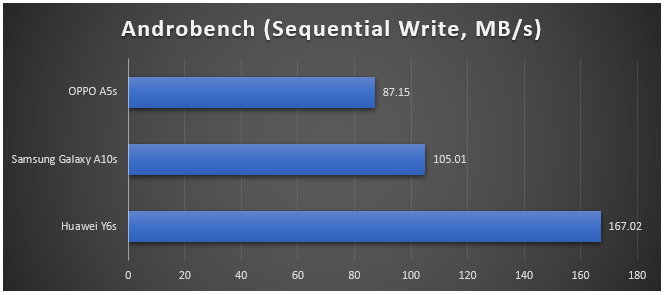Today, we’re doing a quick comparison between three entry-level devices from three of the most prominent brands in the segment.
All three promise a decent user experience for those who want a phone that can handle basic daily tasks such as social media, music, video, email, a bit of photography, and even casual gaming with ease, without burning a big hole in their wallet.
Design
Right off the bat, these three are built pretty much the same. Holding each of them gives you a feeling that they aren’t in the premium range, but they aren’t flimsy as well.
 All of them utilize a glossy finish for most the housing, which makes them look a bit more pricey than they actually are. All have the same design language – branding at the rear panel. All also use a triple slot SIM Tray, which I think should be a standard for any smartphone in 2020.
All of them utilize a glossy finish for most the housing, which makes them look a bit more pricey than they actually are. All have the same design language – branding at the rear panel. All also use a triple slot SIM Tray, which I think should be a standard for any smartphone in 2020.
The Galaxy A10s and the OPPO A5s both have the same button layout – Power button on the right, and volume rocker on the left. The Huawei Y6s on the other hand, retains all its buttons on the right side. All three also stick to a standard microUSB port, which is totally fine at this price point.
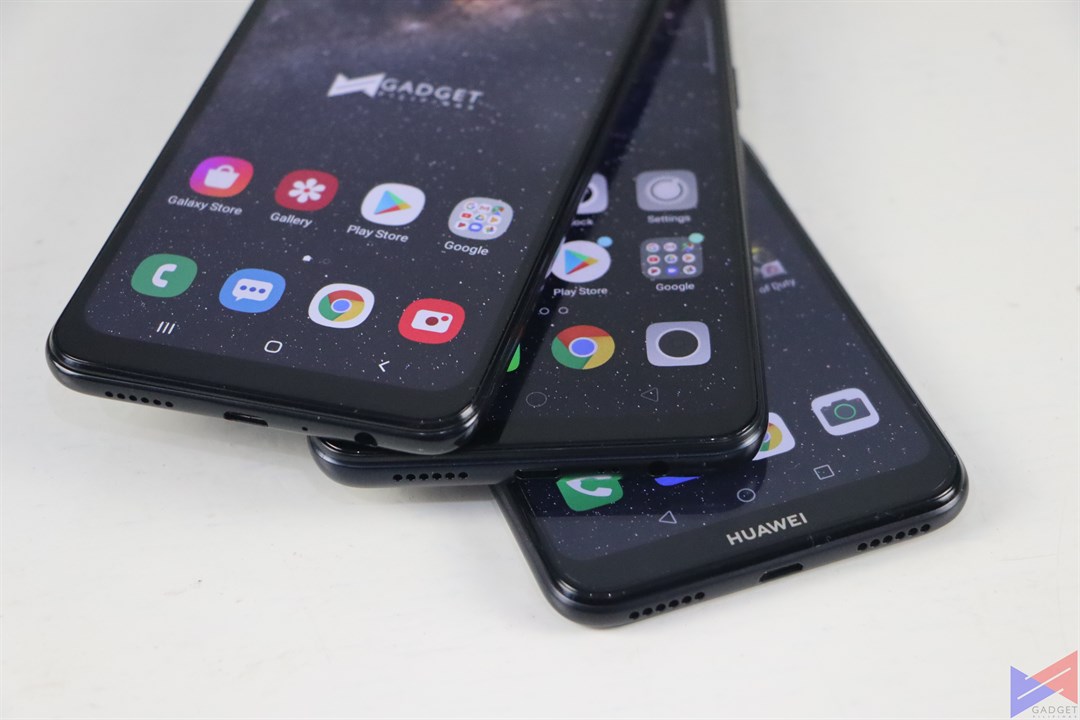 Speaker-wise, the Y6s also boasts HUAWEI SuperSound technology, which allows it to produce louder sound (+6db to be exact) without any noticeable distortion.
Speaker-wise, the Y6s also boasts HUAWEI SuperSound technology, which allows it to produce louder sound (+6db to be exact) without any noticeable distortion.
All three have their fingerprint scanners at the rear. While all of them are the quick to respond, the one on the Y6s is just a strand faster than the two, not that you’ll actually notice in day to day use.
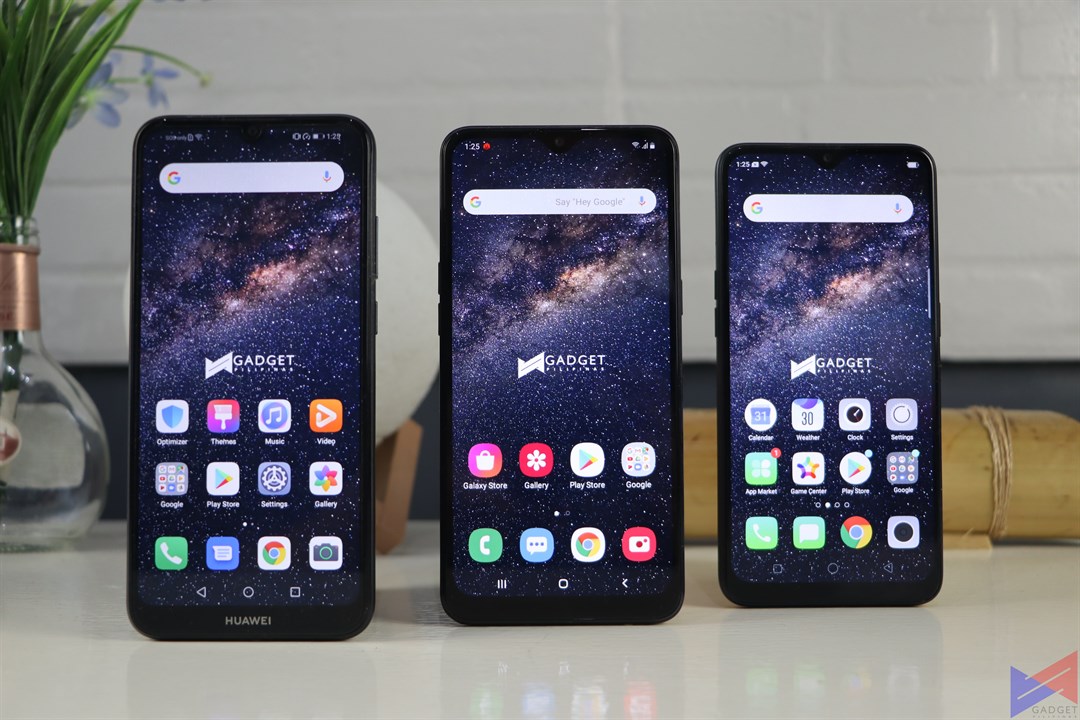 As far as display is concerned, both the A10s and the A5s have a 6.2-inch display, while the Y6s has a slightly smaller 6.09-inch screen, all use IPS panels, and are at HD+ resolution. All can achieve a decent level of brightness, and decent saturation.
As far as display is concerned, both the A10s and the A5s have a 6.2-inch display, while the Y6s has a slightly smaller 6.09-inch screen, all use IPS panels, and are at HD+ resolution. All can achieve a decent level of brightness, and decent saturation.
Performance
Both the Y6s and A5s are powered by an octa-core Helio P35, while the A10s sticks to a Helio P22. In a synthetic benchmark such as AnTuTu, the Y6s flexes its muscles over the two, pulling just slightly ahead of the OPPO, and way ahead of the Samsung.
Do note that among the three, the Y6s also is the only device that has 64GB of storage, which is twice that of the other two. Granted that you really don’t get all of the advertised storage as FREE by default, that difference does count a lot.
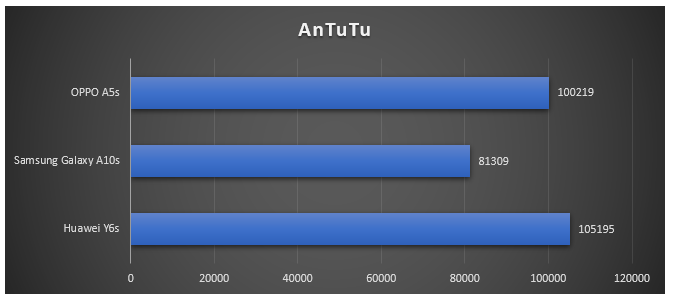 We also tested how fast the storage is on all three devices. Based on the results, the OPPO A5s slightly beats the Y6s and A10s in Sequential Read, while the Y6s beats both the Samsung and the OPPO device on Sequential Write.
We also tested how fast the storage is on all three devices. Based on the results, the OPPO A5s slightly beats the Y6s and A10s in Sequential Read, while the Y6s beats both the Samsung and the OPPO device on Sequential Write.
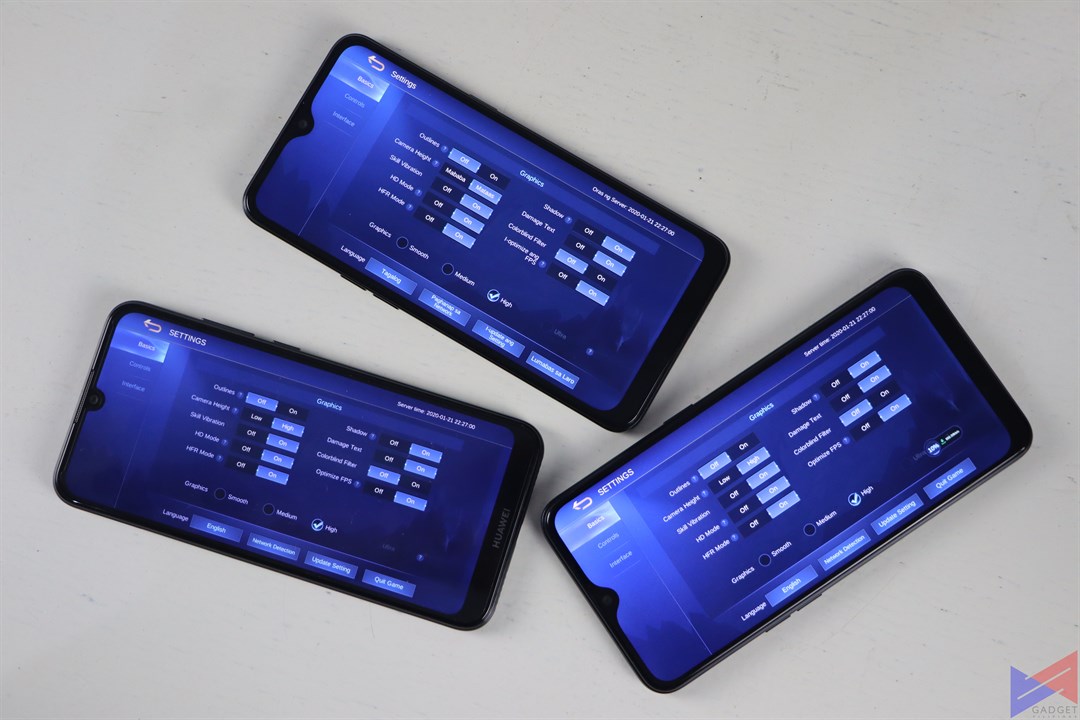 As for gaming, you’d probably think that, none of these devices can deliver a close to decent experience, but you’d be wrong, as all three can actually play Mobile Legends at its dohighest settings, and surprisingly even with HD Mode and HFR Mode ON. You’ll even be able to play CoD Mobile at Low + High FPS setting with only occasional slowdown when a lot is happening in the scene.
As for gaming, you’d probably think that, none of these devices can deliver a close to decent experience, but you’d be wrong, as all three can actually play Mobile Legends at its dohighest settings, and surprisingly even with HD Mode and HFR Mode ON. You’ll even be able to play CoD Mobile at Low + High FPS setting with only occasional slowdown when a lot is happening in the scene.
Software
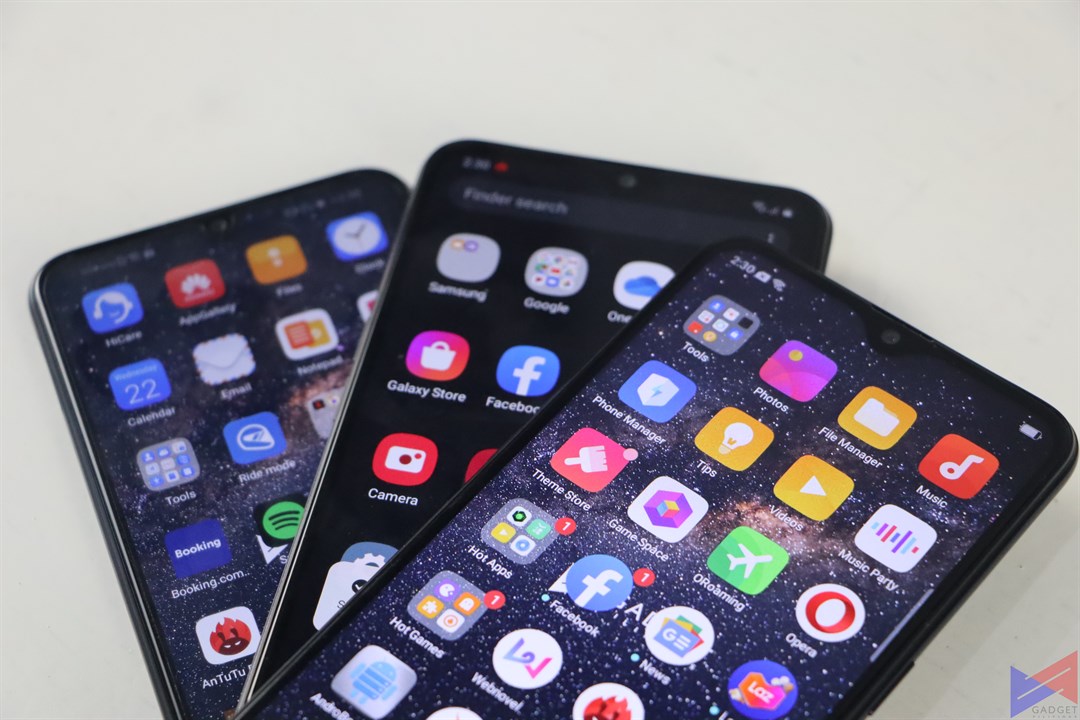 None of the three devices run on stock Android, which means you’re going to have to deal with each company’s own “skin.” EMUI for Huawei, ColorOS for OPPO, and OneUI for Samsung.
None of the three devices run on stock Android, which means you’re going to have to deal with each company’s own “skin.” EMUI for Huawei, ColorOS for OPPO, and OneUI for Samsung.
Each of these takes on Android will have its own set of extra features, which you may or may not find useful. As far as performance is concerned, all three run with no major issues as far as smoothness and fluidity is concerned. You do get some stutters when say, you’re installing an app and browsing menus at the same time, but that’s kind of expected for low tier devices.
Surprisingly, HUAWEI even equipped the Y6s with an FM Radio, just in case Spotify’s down or something. (When did that happen?). It’s a nice to have really, as Radio Stations do give you access to new tracks at times.
In any case, both the Y6s and A10s are on Android 9, while the A5s is still on Android 8.
Quick Verdict
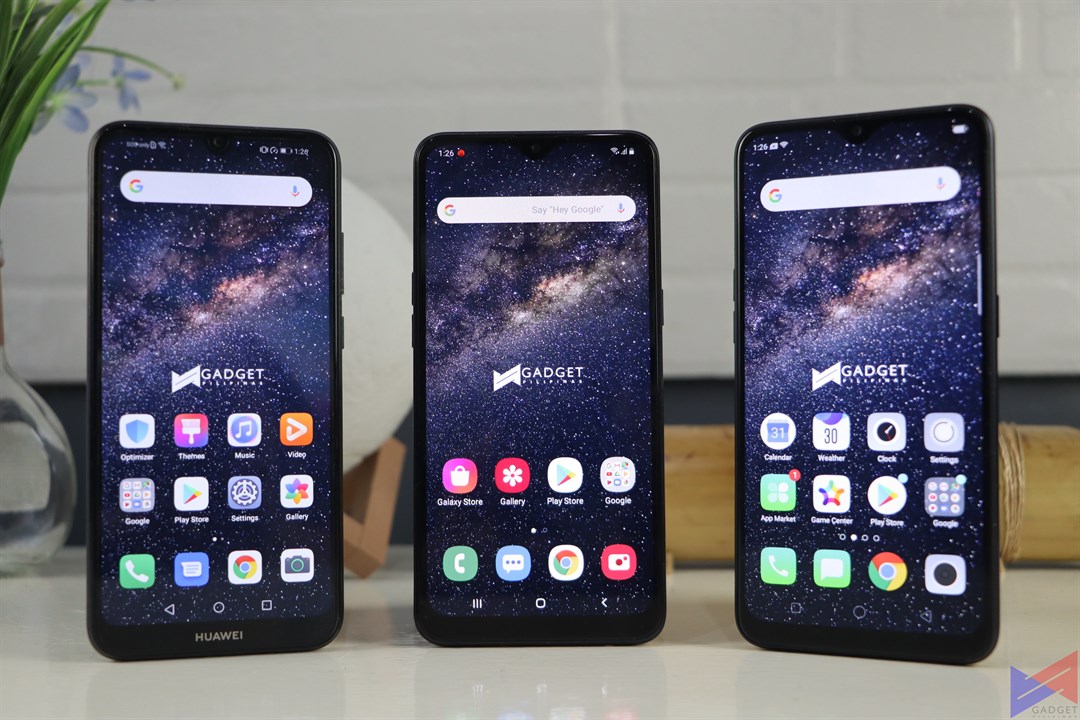 Just based off the tests we’ve done, and considering that all three are priced at PhP6,990, the Huawei Y6s does offer better value, thanks to its capable processor, slightly better display, more responsive fingerprint scanner, and more storage. The OPPO A5s and Galaxy A10s would be neck and neck, but I’d go for the one which has a more updated version of Android.
Just based off the tests we’ve done, and considering that all three are priced at PhP6,990, the Huawei Y6s does offer better value, thanks to its capable processor, slightly better display, more responsive fingerprint scanner, and more storage. The OPPO A5s and Galaxy A10s would be neck and neck, but I’d go for the one which has a more updated version of Android.
Emman has been writing technical and feature articles since 2010. Prior to this, he became one of the instructors at Asia Pacific College in 2008, and eventually landed a job as Business Analyst and Technical Writer at Integrated Open Source Solutions for almost 3 years.

